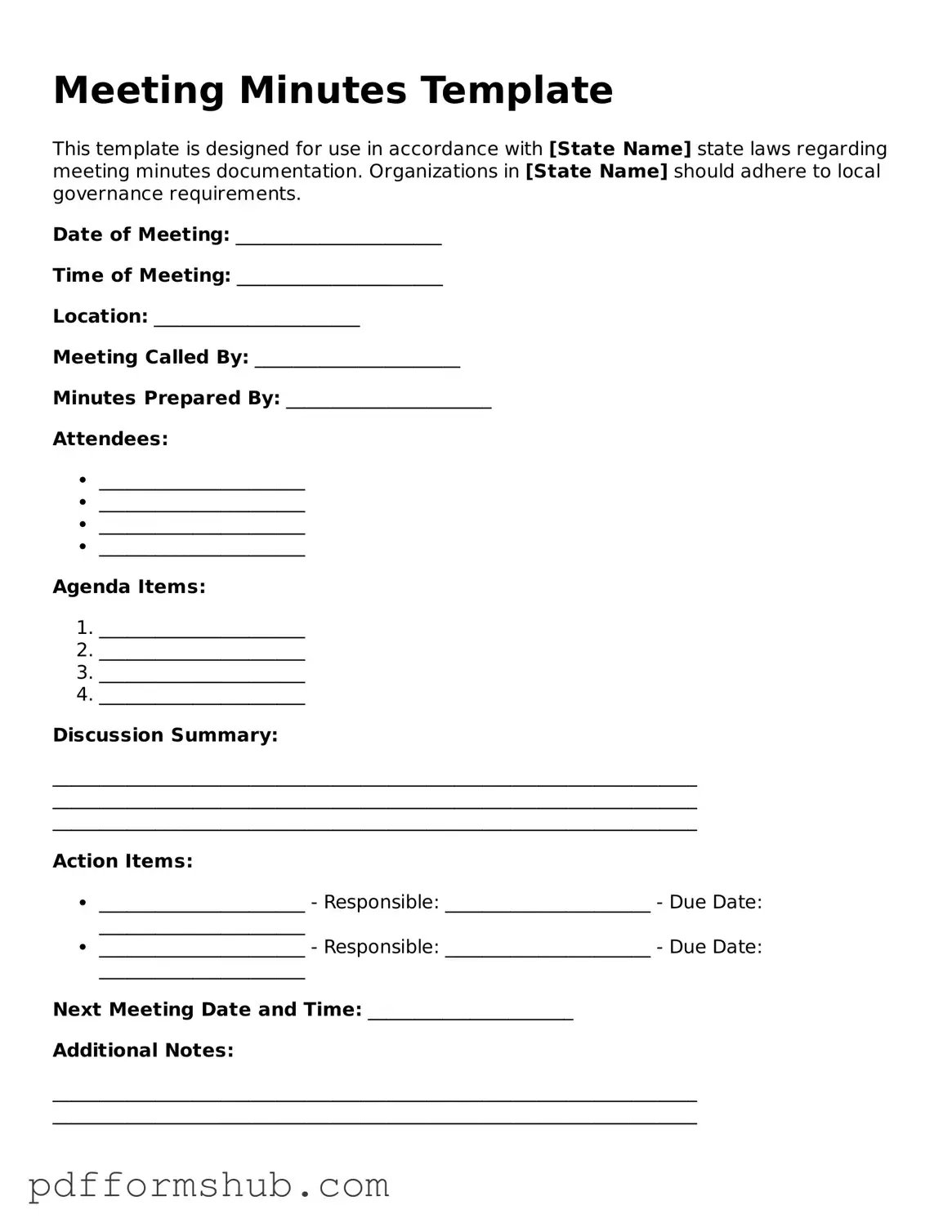When it comes to effective communication and record-keeping in any organization, the Meeting Minutes form stands out as an essential tool. This document serves as a formal record of discussions, decisions, and action items from meetings, ensuring that all participants are on the same page and that nothing is overlooked. Typically, it includes vital details such as the date and time of the meeting, the names of attendees, and the agenda items discussed. Additionally, it captures key points, motions made, and outcomes, providing a clear snapshot of what transpired. By documenting these elements, the form not only aids in accountability but also helps in tracking progress on tasks assigned during the meeting. Whether you're part of a small team or a large organization, utilizing the Meeting Minutes form can enhance transparency and foster a culture of collaboration. With a well-structured format, it allows for easy reference in future discussions, ensuring that everyone can revisit past decisions and follow through on commitments made.
